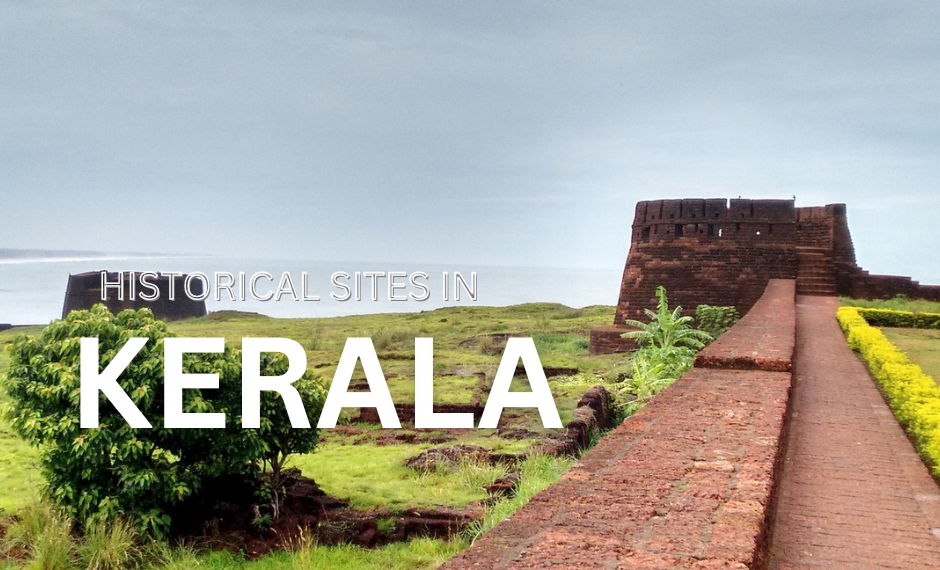Historical Sites in Kerala: A Journey Through Time

Imagine your child exploring the bustling streets of ancient Kerala, surrounded by merchants and traders. How will they react?
Exploring ancient sites will not only captivate your children's imaginations but also instil a love of history and offer a unique blend of education and entertainment.
Why Children Should Learn History
Here are some key reasons why children should be taught history:
- Understanding the Present: When your child studies past events, they are equipped to grasp the causes of current problems and develop informed opinions.
- Developing Critical Thinking: History requires children to analyze evidence, evaluate different perspectives, and then draw conclusions. This encourages critical thinking.
- Promoting Empathy: Understanding the experiences of people from different cultures and time periods can inculcate empathy and tolerance, making your child more compassionate and understanding.
- Cultivating Cultural Awareness: History imparts education to your child about different cultures, traditions, and values. They learn to appreciate diversity and become more informed global citizens.
- Inspiring Curiosity: The fascinating stories and intriguing characters can ignite your child’s curiosity. They become confident to ask questions, explore new ideas, and become lifelong learners.
Planning a Historical Trip with Your Kids
First step is to research popular historical sites that are family-friendly. Learning becomes fun and engaging as these locations often offer interactive exhibits, guided tours, and kid-friendly activities. Consider choosing age-appropriate sites while planning your itinerary, as younger kids may enjoy hands-on activities whereas older children may opt for more in-depth historical explanations. Do remember to pack lots of snacks, water, and comfortable shoes.
Making History Fun for Kids
Try incorporating interactive activities into your historical trip to make it even more engaging for your kids.
- Role Playing: Encourage your children to imagine themselves to be historical figures or characters.
- Scavenger Hunts: Hide clues about historical facts or landmarks around the site and let the kids find them.
- Hands-on Workshops: Research historical sites that offer workshops of traditional crafts or skills(pottery making, weaving, cooking traditional Kerala dishes etc.).
- Storytelling Sessions: Let your children listen to local legends and folktales around a campfire or a shady tree.
- Educational Games: To reinforce what your child has learned about the historical sites you are visiting, you can bring along board games and card games related to them.
Historical Sites in Kerala: A Chronological Guide
Pre-Historic Era
- Edakkal Caves: The prehistoric rock carvings of these caves in Wayanad, offer a glimpse into the early human settlements in Kerala.
- Ariyannur Umbrellas: These ancient stone umbrellas in Palakkad are believed to be remnants of megalithic burial sites.
Ancient Kerala
- Mattancherry Palace: This Portuguese-style palace has a great collection of artefacts and murals portraying Kerala’s history.
- Bekal Fort:The massive Bekal fort located in Kasaragod offers scintillating views of the Arabian Sea and is a great place for children to explore.
- Thrissur Pooram: An annual festival celebrated in Thrissur, it is a magnificent display of Kerala’s rich cultural heritage with colorful processions, music, and dance.
Mediaeval Kerala
- Palakkad Fort: A star-shaped fort, it was built during the Tipu Sultan era and tells us about Kerala’s military history.
- Kumarakom Bird Sanctuary: This sanctuary in Kottayam is a great destination to spot a variety of bird species and learn about Kerala’s diverse ecosystems.
- Alappuzha ( “Venice of the East”): Let your kids enjoy houseboat cruises, backwater tours and experience Kerala’s coastal lifestyle.
Colonial Era
- Dutch Palace: The Dutch palace located in Kochi displays a mix of Dutch, Portuguese, and Indian architectural styles and houses an amazing collection of artefacts.
- Fort Kochi: Here, you can have a glimpse of Kerala’s colonial past. The area features colonial-era buildings, churches, and a Jewish synagogue.
Modern Kerala
- Kerala State Museum: This museum in Thiruvananthapuram houses a huge collection of artefacts, including prehistoric tools, ancient sculptures, and contemporary art.
- Napier Museum: Located in Thiruvananthapuram, the Napier museum is housed in a beautiful Indo-Saracenic building and showcases an impressive collection of artefacts from Kerala and South India.
Akshharam, the online Malayalam language learning school always strives to instil curiosity and offer a better understanding of the traditions and cultural heritage of Kerala, through the interactive learning sessions. Get in touch with us to know more about our summer online Malayalam classes.
